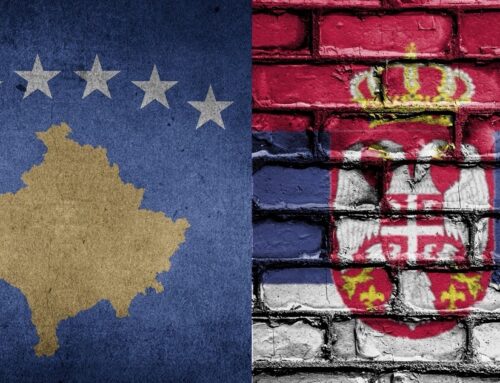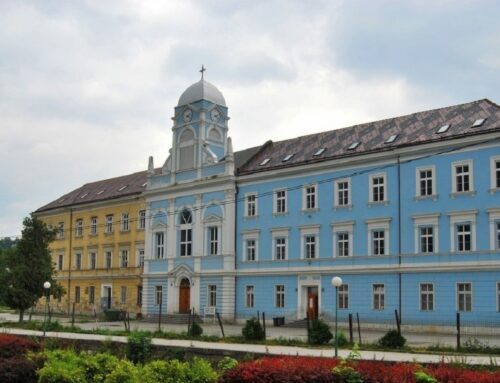Almost a year after the World Health Organisation proclaimed the beginning of the Covid-19 pandemic, the school systems have been hit the hardest in the Western Balkans. The epidemiological crisis has already put in the spotlight digital exclusion, pre-existing urban-rural divides and increasing rates of dropouts and functional illiteracy among students.
When in September 2020 Serbia kicked off the academic year three weeks later than the other public schools in the region, dissatisfaction was already on the rise among school personnel and students. After the festive season, Serbian schools were officially reopened on 18th January, a week later than the rest of the Western Balkans. Despite the fact that some began to attend classes at school and others from home in order to avoid gatherings and minimise the spread of the virus, there is little doubt that teachers and students would probably be exposed to the risk of infection anyway.
Both students and school personnel met the reopening of public schools with fear and distrust toward safety measures and institutional decisions. Jasna Jankovic, leader of the Association of Teachers’ Unions, said that classes have resumed without anyone knowing what the exact situation today is as no data are provided regarding the number of students and teachers being already infected. However, Darija Tepavčević, Minister of Labour, Employment, Veteran and Social Policy and member of the Crisis Staff, had already affirmed seeing no obstacles in handling the pandemic by providing a combination of online and in-class schooling in line with the scheduled protocols implemented according to the number of students per class and grade from primary to high school level.
Tellingly, Serbia has included primary school employees in the third phase of vaccination campaign, namely the latest group of at-risk people, overlooking de facto the heavy toll on everyday life of school personnel. It seems that levels of anxiety among students have already increased. Likewise, teachers struggle with the new teaching environments, as well as with the structural challenges at school and parenting at home.
“I had to hand out materials door-to-door for those students who lacked internet connection and digital tools. I wanted to minimise the loss of instructional time with them and keep in touch with their parents”, said Ana, a Serbian teacher from Novi Sad. “My role model of English teacher and mother overlapped one another”, added Ivana, another Serbian teacher from Belgrade, complaining about the strains of teaching and parenting at home.
Although Serbian authorities appear confident in guaranteeing the right of education for all, some groups are facing uncertainty. Female teachers may pay the highest price. Working with poorly paid jobs in the public education sector while looking after their own children would not only expose them to burnout and labour exploitation, but also lead them to put their carrier development on hold and potentially old age poverty. Indeed, many parents juggling with home schooling had to decide whether to quit their teaching positions or not.
Lack of coherent safety measures and net programmes for the months to come have come to impinge on the Belgrade-backed parallel educational system in North Kosovo. In this instance, however, issues are worse in the so-called “south of the Ibar river” where Serb communities live rather isolated.
As Aleksandar, a Serbian teacher in Southeast Kosovo, affirmed “theoretically everything works according to the system of the Republic of Serbia, but in practice it is also always balanced with Kosovo’s institutions. This leads us [parents and teachers] to a more confusing situation on a daily basis”.
Teachers working in rural areas have attempted to reinvent teaching and learning environments, yet without success. While they are found unskilled in dealing with remote schooling due to the absence of digital devices, families lack tailoring responses for their children. Since September, “it is difficult for parents to provide one-day masks to their children. They often use one per week, or probably for a longer period of time, and they do not have disinfection bottles on a daily basis”, Zoran, a Serb teacher and parent, says. He also added that since “masks are not worn outside the school building and during physical activities” all safety measures the school is trying to manage with, simply make no sense.
In Kosovo, the pandemic has definitely added to the burden of many marginalised communities, whose pre-existing disinterest in education may even deepen dangerously issues of poverty, underdevelopment and unemployment. Among other issues, many teachers and parents complain about the lack of vocational trainings and variety of educational programmes at school which may help the future generation to find their own place on the job market. Yet another major concern that seems to be completely overlooked.
Francesco Trupia
*All names have been anonymised in compliance with applicable research code of ethics and a generic risk assessment. This op-ed was written as part of wider research and advocacy efforts supported by the Kosovo Foundation for Open Society in the context of ‘Kosovo Research and Analysis Fellowship’.




